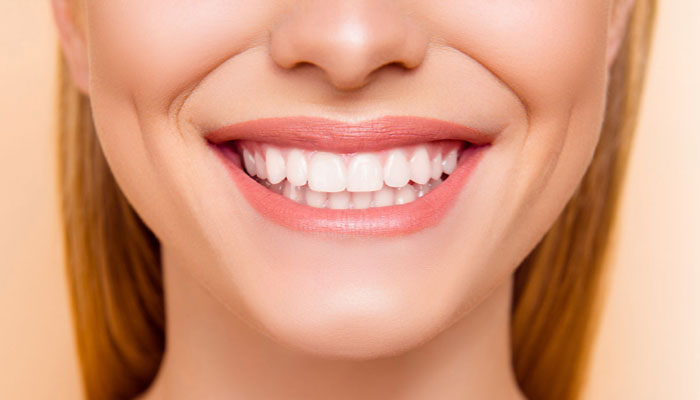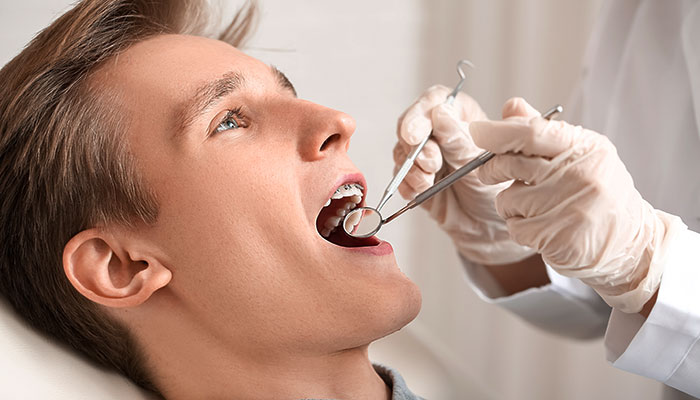Orthodontics for All Ages Including Invisalign® in Edmonton
Learning about orthodontic care
Orthodontics is a wonderful area of healthcare and as much an art as it is a science. There have been many significant changes and advances that have taken place related to treatment techniques and procedures in this creative science. Technology has played an amazing role in orthodontics, allowing us to more precisely diagnose and treat our patients. Innovations in the orthodontic appliances that we use can achieve the intended results faster, with less inconvenience and with less discomfort. We now see exceptional treatment results with these advanced appliances and procedures that in the past would have required extractions or even surgery.
We have committed ourselves to stay in a leadership position in all aspects of orthodontics in order to better serve you and your family.
What is the right age for orthodontics?
Young Children
Dr. Eguren recommends that a child receive his or her first orthodontic examination no later than age 7. Early diagnosis and treatment can correct small problems before they become big problems.
Typical signs of the need for an orthodontic exam may include but are not limited to the early or late loss of teeth, difficulty in chewing, mouth-breathing, finger sucking, crowded teeth, jaw dysfunction, a sunken or protruding jaw, or misaligned teeth. Signs of potential orthodontic problems may not be obvious. Our initial exams are at no-charge and are the most sensible means to assure proper oral health.
Early diagnosis and treatment in many cases can help to avoid more extensive treatment in the future, years after the jaw and face have developed. Multi-phase, early interceptive treatment is not always necessary but will be recommended when early treatment can benefit your child.
Dental Care for Children is an organization that provides free dental care for children in need. To learn more about their services or to make a donation or volunteer your time, please visit the Dental Care for Children website.
Adolescents
A healthy smile is a confident smile and we believe that every child deserves the opportunity to smile with confidence. Orthodontic treatment from Dr. Eguren can provide your teenagers with the opportunity to feel good about themselves and smile with confidence.
Orthodontics is more than straight teeth; an overbite or underbite, a dysfunctional smile, a sunken or protruding chin, in many cases can all be corrected with orthodontic treatment. Proper tooth and jaw alignment are critical to achieving proper long-term oral health.
One of the most recent developments in orthodontic treatment techniques is the innovation of smaller, more active braces. The small braces are less obvious and more discriminate, and the more active banding material reduces the number of visits to our office and provides shorter treatment times.
Adults
Today's general public is typically very well informed, especially when it comes to proper health. What today's adults may not know is that it is never too late to realize a perfect and healthy smile. Adult orthodontic treatment is becoming more and more popular every day. Advances in technology now provide for more discriminate treatment and quicker results.
How braces and aligners can work for you
As we age, misalignment of the teeth is very common, even if you have had braces earlier in life. Oftentimes simple therapy is the answer to gaining or regaining a perfect and healthy smile. With fewer office visits required and the availability of aesthetic braces, there is no reason why every adult shouldn't have the perfect smile.
Teeth provide the support structure for the soft tissue of the lower face, including lips, cheeks, and marionette lines. By repositioning the teeth and jaw, skin can appear tighter and lips can appear fuller. We can often achieve greater facial aesthetics without surgery and/or the extraction of teeth by creating a treatment plan that utilizes low-friction appliances to expand the jaw and reposition teeth and gums.
Common types of orthodontic problems
Class II – Class II problems represent an abnormal bite relationship in which the upper jaw and teeth are located in front of the lower jaw and teeth. Class II patients usually exhibit a convex facial profile with a recessed chin. A skeletal Class II problem occurs when the upper molars are forward of the lower molars. This gives the patient the appearance of having a recessed lower jaw, a protruding upper jaw, or both.
Class III – Class III problems are also primarily genetic in origin. In this instance, the lower jaw and teeth are positioned in front of the upper jaw and teeth. The lower jaw may appear to be excessively large, but in many cases, the lack of upper jaw development is at fault. Several treatment options are available to correct a Class III problem.
Crowding – Crowding of the teeth is probably the most common orthodontic problem. Although many factors contribute to dental crowding, this problem typically stems from a discrepancy between the space in each jaw and the size of the teeth.
Crowding is often one of several orthodontic problems. Crowding can be the cause or result of other problems, such as impacted teeth, retained teeth or teeth that do not naturally fall out. Crossbite of the front or rear teeth can also cause the teeth to become crowded.
Crossbite – A posterior crossbite will usually result from a narrow upper jaw or abnormally wide lower jaw. A narrow upper jaw will often force a patient to move the lower jaw forward or to the side when closing into a stable bite. When closed into this accommodating position, the lower teeth are located outside the upper teeth.
A posterior crossbite can involve one side of the jaw, known as a unilateral crossbite, or both sides of the jaw, known as a bilateral crossbite.
Deep bite – Excessive vertical overlapping of incisor teeth called deep bite or 'overbite' is generally found in association with a discrepancy between the length of the upper and lower jaws. It usually results in excessive eruption of either the upper or lower incisors or both. Associated problems include an excessive display of gum tissue, lip protrusion or entrapment, biting the roof of the mouth, and incisor wear.
Open bite – An open bite can occur with the front teeth, known as an anterior open bite or with the back teeth, referred to as a posterior open bite. An anterior open bite is the lack of vertical overlap of the front teeth and can usually be traced to jaw disharmony or habits such as thumb sucking or the posture of the tongue pushing against the front teeth. A posterior open bite is a problem in which the back teeth do not meet vertically, which keeps the jaw from functioning properly.
Spacing – Spaces between teeth are another common problem associated with the need for orthodontic care. Like crowding, spacing may be related to a tooth-to-jaw size disharmony. Spacing may occur between the front and the back teeth. Tooth size discrepancies, such as smaller teeth or abnormally shaped teeth, can also create abnormal spacing.
Whether you’re calling to inquire about more information or book your first appointment, our team would love to hear from you! Contact us today - 780-432-3430.




